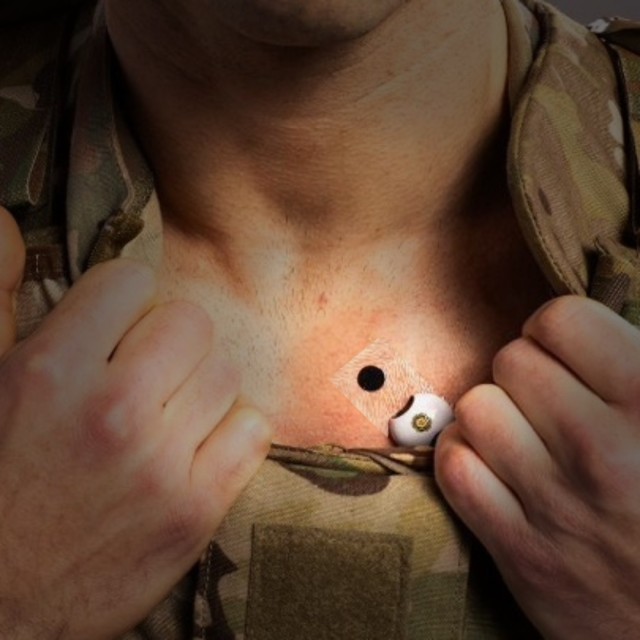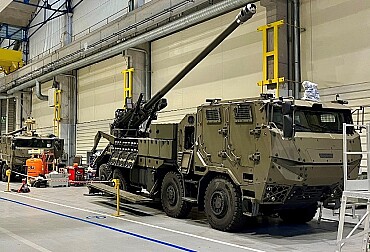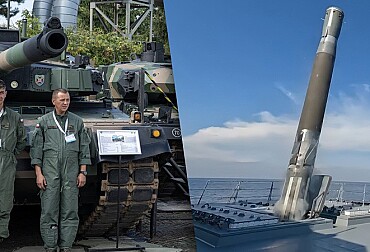American Special Operations Forces to deploy advanced wearable technology by end of year
As modern warfare evolves, so does the technology supporting those on the front lines. By the end of this year, select American Special Operations Forces (SOF) will begin deploying advanced wearable technology designed to provide real-time monitoring of vital signs and environmental hazards. This initiative, overseen by the Joint Program Executive Office for Chemical, Biological, Radiological, and Nuclear Defense’s (JPEO-CBRND) SOF office, marks a significant milestone in enhancing operational safety and efficiency.

A New Era of Integrated Monitoring
-
Comprehensive Sensor Integration: The innovative wearable technology integrates seamlessly with chemical sensors, providing comprehensive monitoring capabilities. Steve Carrig, the product lead for strategic acquisitions at JPEO-CBRND, highlights the technology's dual capability: "You’re not only using physiological markers—such as heat, stress, and fatigue—but also environmental monitoring as a separate data stream. This integration informs experts in tactical environments about critical situations, such as a soldier's spiked heart rate due to chemical exposure."
-
Development and Prototyping: Developed by LifeLens Technologies, this wearable is part of the Army's Wearable All-hazard Remote-monitoring Program (WARP). It represents the Department of Defense's (DOD) first physiological monitoring device fielded to joint forces, setting a precedent for future innovations.
-
Device Composition and Capabilities:
- The device includes a compact node housing 25 miniature monitors, typically affixed to the chest with adhesive.
- Accompanied by a "gateway" device, similar in size to a fob, it enables distributed sensor fusion and computing capabilities.
- It connects with MRI Global’s data visualization tools, which aggregate various data streams into a tactical awareness kit. This kit presents a holistic data view, enhancing operational decision-making and efficiency.
From Concept to Necessity
-
Pilot Studies and Pandemic Insights: The need for such advanced monitoring arose from a Department of Defense pilot aimed at understanding warfighter vitals. The Covid-19 pandemic further underscored the importance of monitoring physiological stressors, prompting the SOF community to fast-track the development and deployment of this technology.
-
SOCOM's Pioneering Role: The Special Operations Command (SOCOM) has been at the forefront of adopting this technology. Their focus is on monitoring warfighter health in tactical environments and integrating this data with environmental sensor outputs to ensure comprehensive situational awareness.
Selection Process and Feedback
-
Choosing the Right Device: As part of a "Rapid Acquisition Effort" launched in January 2024, various wearables were tested, including rings, watches, and bands. Ultimately, LifeLens’ device was chosen for its superior comfort and practicality. Carrig noted, "The device’s form factor was consistently favored; users often forgot they were wearing it, unlike other options that posed practical challenges."
-
Challenges with Alternative Devices: Rings were deemed impractical due to their propensity to snag in tactical situations. Watches and bands were often obscured or restricted by protective gear. Other forms, such as shirts with integrated ECGs or in-ear devices, were tested but fell short in terms of user comfort and data accuracy.
Looking Ahead
-
Deployment Plans: The LifeLens device is on track for deployment by the end of this year. Although specific deployment numbers remain undisclosed, the rapid acquisition strategy is expected to facilitate swift adaptation and enhancement of the technology.
-
Commitment to Continuous Improvement: The rapid acquisition approach emphasizes quick iteration and learning from potential setbacks, aiming to refine the technology and maximize its operational benefits. "If we’re going to fail, let’s fail early, fail fast, and understand what the impacts are and where we can iterate from that," Carrig explained.
This deployment represents more than just a technological advancement; it signifies a commitment to safeguarding the health and effectiveness of American warfighters. By leveraging cutting-edge innovations and prioritizing user comfort and practicality, the SOF is setting a new standard in operational safety and performance. As these technologies continue to evolve, they promise to redefine how military operations are conducted, ensuring that those on the front lines are better protected and more informed than ever before.






